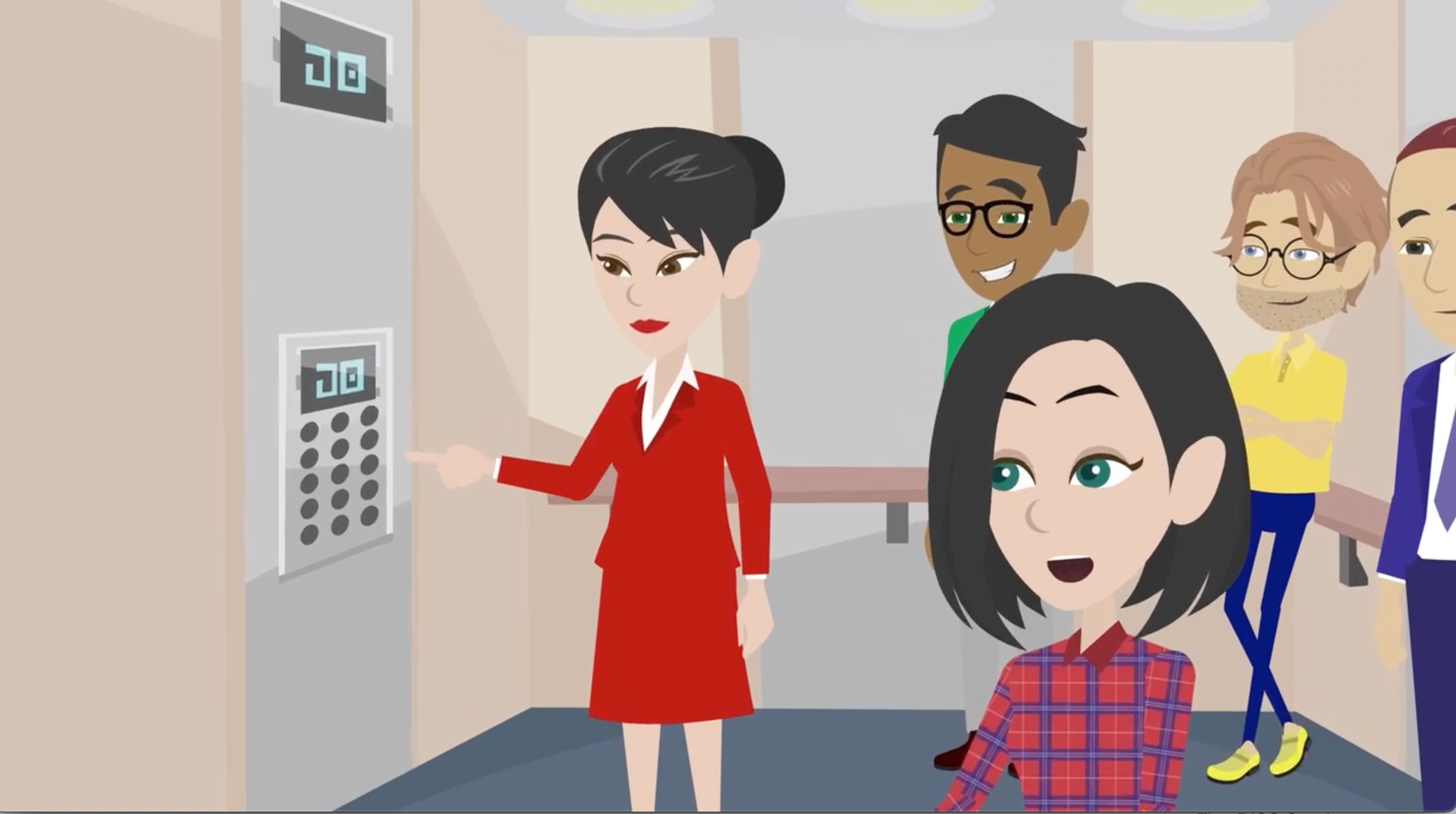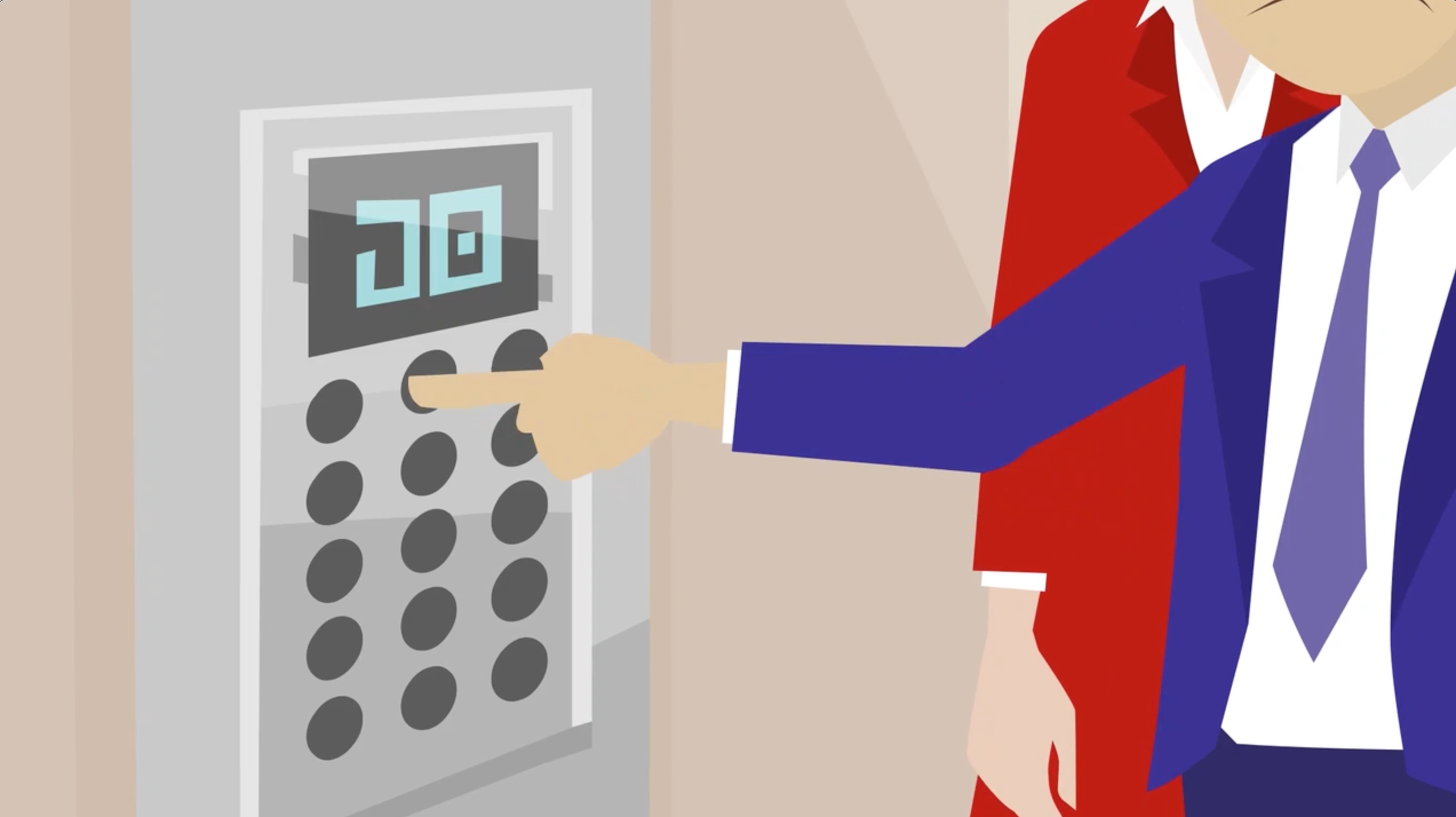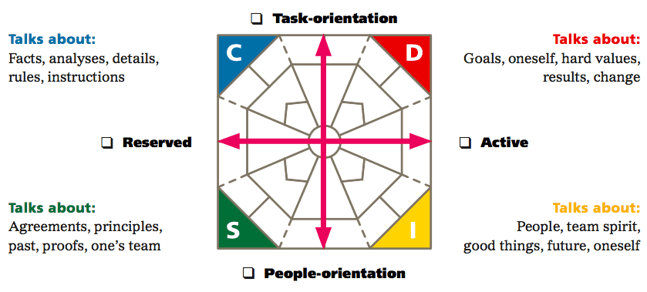You cannot escape your style, even on an elevator!
DISC helps you identify the styles of others. Why, you ask? Imagine you had insight into how others prefer to do things and interact with you; now you can adjust more effectively to improve your interactions. Elevators are just another opportunity to practice!
D-styles: better move quickly!

You're walking up to an elevator with the doors open. You see someone pressing the elevator button and you're thinking, 'great! they're holding the door for me' when in fact, they're pressing the 'close door' button.
D-styles move quickly and can appear impatient and in a hurry. They don't have time to wait. You can try to make a run for it or it's the next elevator for you!
I-styles: never meet a stranger!

I-styles never meet a stranger. Rather, they see new opportunities to chat. They're rushing onto the elevator because they're in a hurry to get to their floor. They could even be late, but it doesn't prevent them from starting up a conversation. You're likely to have a friendly chat with the I-style, where you'll get off on your floor with a smile on your face. You may even find yourself setting a coffee date with your new friend as they're rushing out the door.
S-styles: polite and cautiously friendly

S-styles walk calmly and steadily into the elevator, smiling and nodding politely when they see you. Now you've greeted each other, you can comfortably enjoy the ride to your floor. They're not likely to strike up further conversation, but will amicably chat with you if you initiate it. If you or they get off, they'll smile and wish you a nice rest of the day.
C-styles: Are we following the rules?

C-styles walk onto the elevator and assess the situation. How many people are currently on the elevator? What is the maximum weight limit or occupancy? How many buttons for floors are already pushed? The may or may not make eye contact; preferring to ride in silence. If there is any discrepancy in the elevator, such as too many people riding, they will punch the next floor and get off. They would prefer to patiently wait for the next elevator where they can reassess the situation.
Elevator observations
 Now, obviously these are tongue-in-cheek descriptions of styles on elevators, but the point is you can identify DISC styles if you take time to observe!
Now, obviously these are tongue-in-cheek descriptions of styles on elevators, but the point is you can identify DISC styles if you take time to observe!
Think about what others prefer to talk about or if they prefer not to talk. You can do it without having to converse or communicate with the other person. Are they checking their watch? Do they have strong or hesitant eye contact? Do they have open or closed body language?
The more you practice identifying styles of others, the more it becomes part of what you do. The end goal is to give yourself more information about others so you can increase situational awareness and know how to modify your style to better your interactions and outcomes. Try it!
